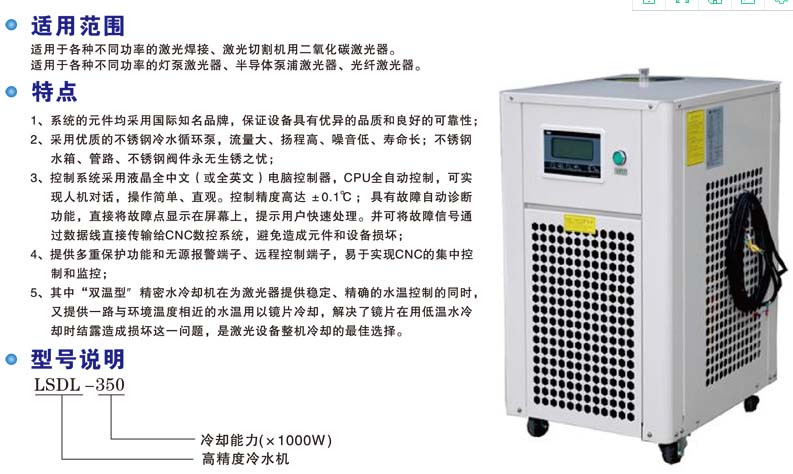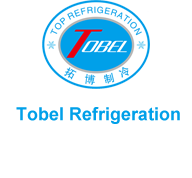Industrial water chiller is a device that provides constant temperature, constant current, and constant pressure cooling water, and is one of the indispensable auxiliary equipment in industrial processes. Its working principle is to inject a certain amount of water into the chassis in advance, cool the water through the refrigeration system, and then transport the low-temperature cooling water to the equipment that needs to be cooled through the water pump.

The existing industrial chillers have low working efficiency and mostly rely on natural heat exchange between heat exchangers and cooling water, so there are obvious work breakpoints that cannot ensure continuous supply of cooling water. Meanwhile, due to the fact that most industrial chillers operate outdoors, their working efficiency is easily affected by environmental temperature. So it is necessary to develop a new and efficient industrial chiller to make up for the shortcomings of existing technology.
Industrial chiller Including: box body, refrigeration pipeline, heat exchange device, circulation pipeline, inlet pump, drainage pump; The heat exchange device is located inside the box and includes a first spiral tube, a second spiral tube, and a horizontal tube; The outlet end of the first spiral tube is connected to the inlet end of the second spiral tube through a horizontal tube; The discharge end of the refrigeration pipeline passes through the top of the box and is connected to the inlet end of the first spiral tube. The receiving end of the refrigeration pipeline passes through the top of the box and is connected to the outlet end of the second spiral tube. Along the receiving end to the discharge end of the refrigeration pipeline, there are gas-liquid separators, compressors, oil-gas separators, condensers, and expansion valves arranged in sequence; One end of the circulation pipeline is inserted into the box from the top, and the other end is inserted into the box from the bottom. A centrifugal pump is also installed on the circulation pipeline; The inlet pump is located at the top of the side of the box, and a drainage pump is installed on the side of the box below the inlet pump. The inlet pump and the drainage pump are respectively connected to the box through pipelines; There are also four support columns at the bottom of the box, and each support column is equipped with a universal wheel at the bottom.
Before starting work, inject refrigerant into the refrigeration pipeline and complete the pumping work of the inlet and outlet pumps. After starting work, the compressor and condenser work together to create sufficient cooling capacity for the heat exchange device. At this time, the heat exchange device comes into contact with water inside the box and absorbs heat from the water. In order to accelerate the heat exchange process, the centrifugal pump is turned on, and the water inside the box will circulate through the circulation pipeline. The circular holes on the radiation plate and the baffle inside the box will disrupt the direction of the water flow, reducing the time for heat exchange. During winter work, the temperature sensor will detect the ambient temperature. If the ambient temperature is too low, it will cause the heating layer to heat up, preventing the circulation pipeline from cracking due to the freezing of cooling water. This device can also achieve automatic operation through a PLC controller. Before automatic operation, the control logic commands should be edited in advance, and the good working conditions of each working component inside the box should be ensured.


